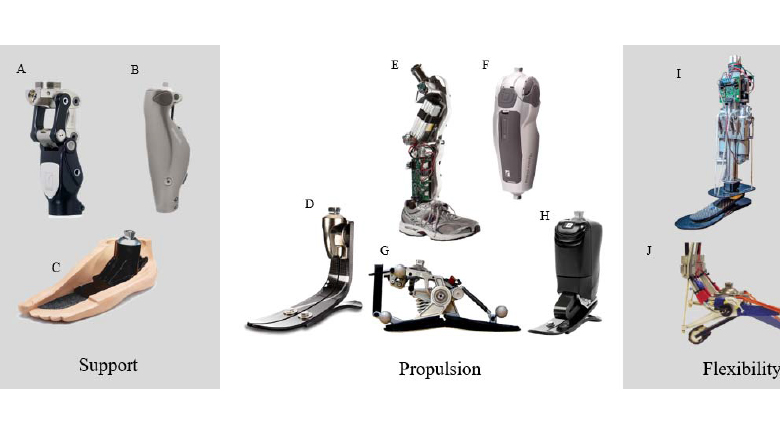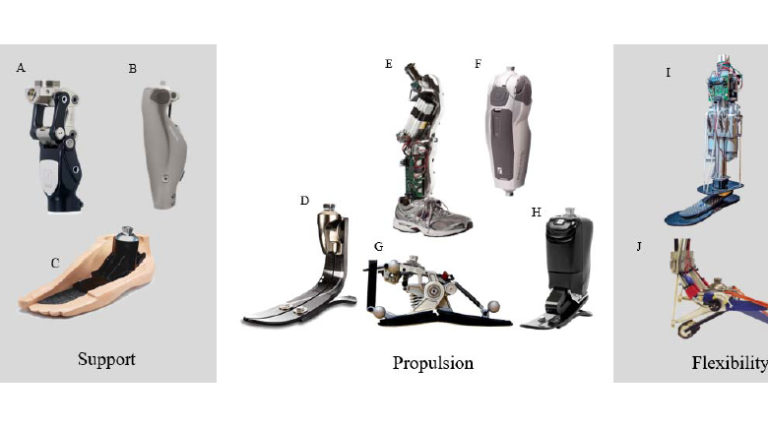
This paper aims to develop a knowledge base and identify the promising research pathways toward designing lower limb prostheses for optimal biomechanical and clinical outcomes. It is based on the literature search representing the state of the art in the lower limb prosthesis joint design and biomechanical analysis. Current design solutions are organized in terms of fulfilling four key functional roles: body support, propulsion, task flexibility, and loading relief. Biomechanical analyses of these designs reveal that the hypothesized outcomes are not consistently observed. We suggest that these outcomes may be improved by incorporating tools that can predict user performance metrics to optimize the device during the initial design process. We also note that the scope of the solution space of most current designs is limited by focusing on the anthropomorphic design approaches that do not account for the person’s altered anatomy post-amputation. The effects of the prosthetic joint behavior on whole-body gait biomechanics and user experience are likewise under-explored. Two research paths to support the goal of better predicting the user outcomes are proposed: experimental parameterization of designs and model-based simulations. However, while work in these areas has introduced promising new possibilities, connecting both to improve real-world performance remains a challenge.

